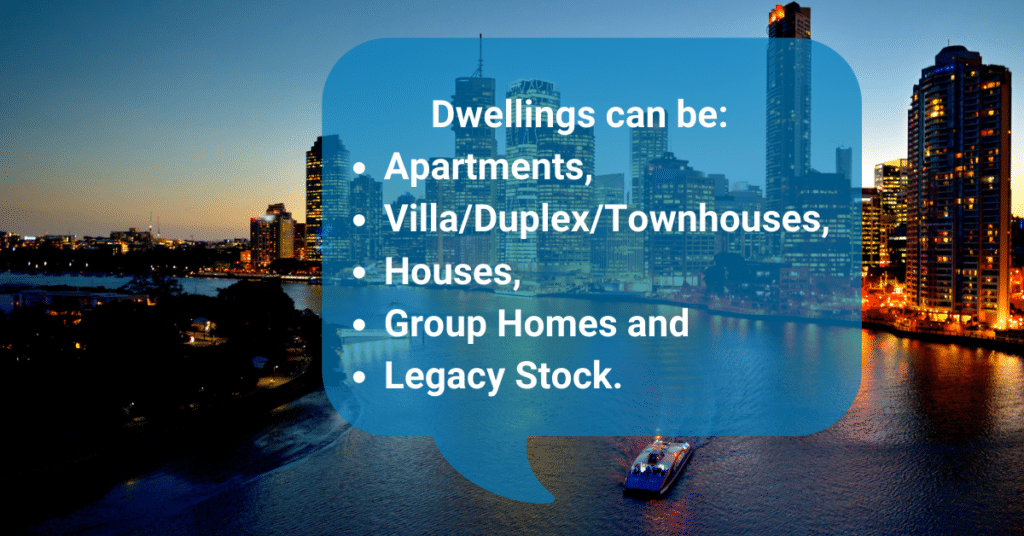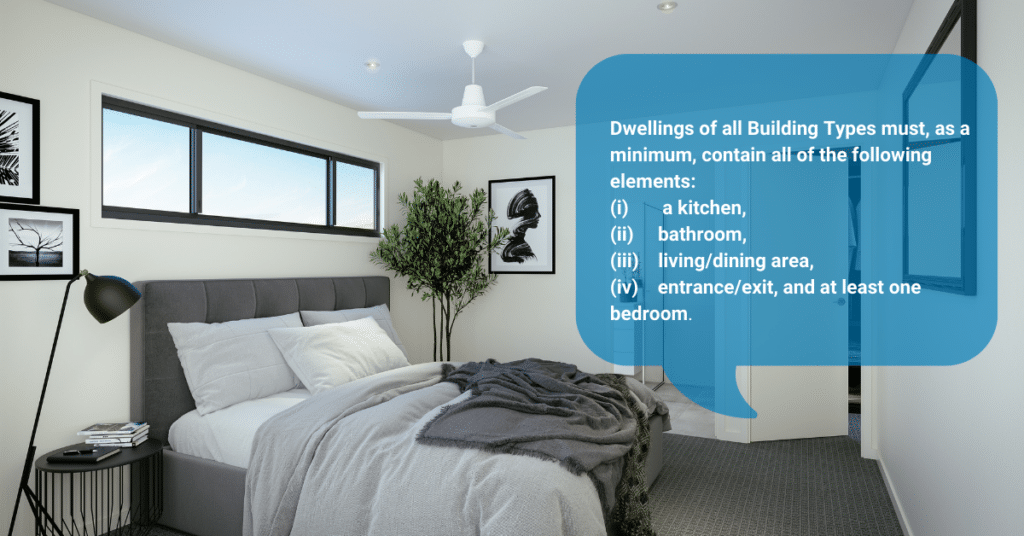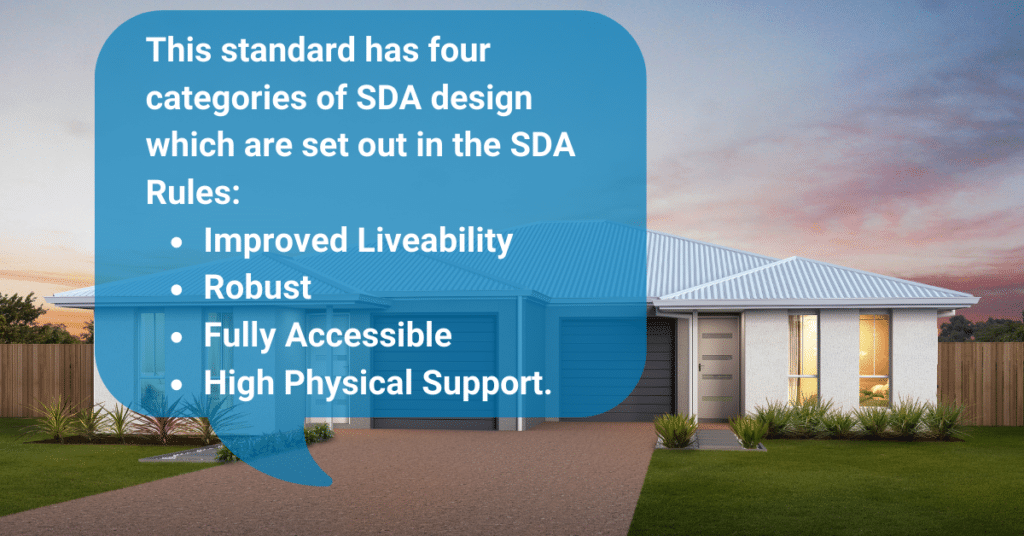Home / What you Must Know about NDIS Investment Property?
Investing in an NDIS SDA investment property can be an excellent opportunity for an astute investor seeking high returns. There is, however, a lot more that you need to understand about this type of investment.
An NDIS Investment property is not as straight forward or as simple as a standard house and land package. Still, it can provide huge returns whilst also helping a person in need of suitable accommodation.
What is NDIS?
The NDIS stands for the National Disability Insurance Scheme. It provides support to people with a disability, their families, and carers. The NDIS is jointly governed and funded by the Federal and relevant state and territory governments.
The scheme started in 2016. It takes a lifetime approach to improve the well being of disabled persons and their carers.
The Australian Government estimate that there are approximately 4.3 million Australians who have a disability. Over the next five years, the NDIS will provide more than $22 billion in funding a year to an estimated 500,000 Australians with permanent and significant disabilities.
The NDIS can provide people who have a disability with information and connections to services in their communities.
What is NDIS SDA?
A vital component of the NDIS is Specialist Disability Accommodation (SDA). SDA refers to accommodation for people who require specialist housing solutions, including assisting with the delivery of supports that cater to extreme functional impairment or very high support needs.
This funding is only provided to a small proportion of the overall NDIS participants, who meet specific eligibility criteria.
The SDA funding is also aimed at stimulating investment in developing new high-quality dwellings for eligible NDIS participants. SDA is for the homes in which the services are delivered, not for the support services.
SDA Housing is a type of housing that has been specially designed or modified to meet the needs of persons with extreme functional impairment or very high support needs. Those eligible can receive funds for the cost of this housing through SDA payments to an SDA provider.
How Do Investors Fit into the NDIS SDA?
Investors have the opportunity to gain returns by and assist those in need by investing in an approved SDA dwelling. The scheme is aiming to rehouse persons with disabilities into privately established high-quality specialist accommodation. The NDIS will cover the cost of accommodation and ongoing care for the approved participants to enter SDA housing.

Investors can purchase approved SDA housing and have it leased to approved participants through a registered provider. The NDIS will only pay SDA funds to a registered provider with enrolled and compliant dwelling.
Current Shortages of Suitable Housing
The Australian Government estimate that there is a significant shortage of suitable accommodation available for NDIS participants.
Recent Australian Government publication estimates that an additional 33,200 people may require SDA, on top of the already 17,500 people in this housing. 6,200 people of the 33,200 people mentioned above are under the age of 64 and residing in aged care facilities!
It is estimated that an additional 4000 participants, currently housed in SDA, will require their existing properties to be replaced by new stock.
The above figures show that this is a significant problem, and there is a considerable demand for high-quality specialist accommodation.
Where are the participants currently living?
Of the current estimated 27,000 people with high support needs that are not currently living in SDA or aged care. The majority of these people are living at home, many with ageing parents or other family carers.
Most of these people will continue to receive NDIS support whilst they seek more appropriate accommodation facilities.
How Do SDA Payments work for investors?
The SDA Payments are for capital only. Meaning, they are only for (bricks and mortar) not for any person to person services offered.
Under the SDA funding, an eligible participant can make their own decisions regarding finding and entering into an agreement with a registered NDIS provider. The scheme aims to allow participant choice and control in decisions.
This type of funding model is different from traditional disability funding. Instead of being managed through a central grant program, the funds are provided directly to the approved participants. These approved participants then go about choosing their preferred registered NDIS provider. This structure allows the participant more choice in where they would like to live.
This payment structure drives greater competition into the market and provides a better end solution for the participants.
Many people have questioned how long the funding is here to stay? The Australian Commonwealth and the State and Territory Governments have legislated a long term commitment to providing this funding.
Individual NDIS Plans
The funding for each participant is outlined in their NDIS Plan. This plan describes the amount of SDA funding and the specific Design category, building types and locations.

The amount that is allocated to each participant is assessed against the individual needs. The NDIS uses the set of published SDA price limits in determining the appropriate funding for the participant’s plan.
A Market Based Approach
There is currently no cap on the number of SDA dwellings that can be enrolled under the NDIS. Instead, the Government have used a market-based approach, whereby the forces of demand and supply will determine the supply of SDA homes required to meet the demand from approved participants.
As the NDIS does not fund the providers directly, the provider’s amount depends on the participants. The amount provided to each participant is based on consideration of their goals and preferences, the reasonable and necessary test; and the SDA eligibility criteria.
Property designs and developments are all facilitated through the participants choice. Forces of demand and supply in the market place should lead to a higher quality end product for the end-user.
What must standards must properties meet for SDA?
Each dwelling must meet requirements to be enrolled in the NDIA, which includes certification standards. Certification against the SDA design standards is required.

Whilst third party assessors can be engaged at the design stage; the dwelling can only be enrolled with the NDIA once construction is fully complete, and the certificate-of-occupancy has been issued.
Registration as a provider of SDA with State and Territory authorities is required. The providers must also meet the building codes and laws associated with the local government authority.
How do Participants and SDA Dwellings Connect?
As previously mentioned, the NDIS operates under a market-based approach. This approach aims to enable more participant choice and control in decision-making and force competition and innovation in the market.
The NDIA doesn’t centrally administer the placement of participants. It’s expected that each participant will find and apply for appropriate advertised vacancies. The providers must advertise vacancies and control selection processes themselves.
Each participant with an SDA allocation will approach an ADA provider with an advertised vacancy and decide which dwelling best meets their situation.
The NDIA further assists participants in some instances by providing additional funding for a support coordinator. A support coordinator can assist in aspects of searching for and considering vacancies. There is also a Provider Finder which participants can utilise.
SDA providers registered with the NDIS looking tenants can utilise various methods of connecting with tenants. These include the provider finder, organisational websites, local networks, web-based platforms, and third-party contracted tenancy managers.
How Does an Investor Receive Payments?
The income from an SDA property is different from a standard investment property. The income consists of three separate parts:
- SDA Payment
- Commonwealth Rent Assist
- The Reasonable Rent Contribution which is 25% of the recipient’s base disability support pension.
What Investors Need to Know about NDIS Investment
It’s all about the participants!
We must point out that the funding is attached to the NDIS Participant, and not the property itself. If you don’t have an approved participant to rent out the property, you will not be eligible for the funding.
Some investors build NDIS properties in oversaturated areas or areas where there is very little, or no demand from NDIS approved tenants. With no tenants to rent out the dwellings, these properties are not eligible to receive the funding.
It is not merely a matter of building a new property to SDA specification and having it approved; you must also find an eligible participant/s that is wanting to rent that property.
Based on this, you must do your due diligence in selecting an area with demand from potential approved tenants, where there is not currently an adequate supply of approved dwellings.
It’s a Market-Based Approach, so Supply and Demand rule.
As mentioned above, the NDIS is rolled-out through a market-based approach. This is a great way of doing things. It should give the participants a more competitive and innovative end product; as builders, developers and investors compete to provide NDIS compliant properties. It should result in the best product in the most sought-after areas, eventually winning. It does mean for investors that there are fewer assurances of receiving the funding.
The Pros and Cons of NDIS Investment Property
As with any investment property, there are both pros and cons associated with it. Outlined below are some of the key advantages and disadvantages that investors need to be aware of with NDIS property investment.
PROS
- High Returns: There are very high returns available to investors when dwellings are fully let with approved NDIS SDA participants.
- Federal Government-Backed Funding: Once approved, this funding is backed by the Federal Government and provides a safe and secure income stream to the investor.
- Socially Responsible Investment: Investors can feel good knowing that they are providing housing solutions to people currently residing in inadequate dwellings.
CONS:
- Specialised Property: This type of property investment is highly regulated and must be operated by registered NDIS providers.
- Borrowing Requirements: Investors need to be aware that these properties are harder to finance and often require more significant deposits.
- Possible Market Saturation: As mentioned previously, there is the possibility that certain areas may become oversupplied and finding suitable tenants may become difficult.
Design Categories of SDA Housing
There are four key categories of SDA housing design. These are as follows:
- Improved Livability: This type of housing has been designed to enhance the livability of occupants by including a reasonable level of physical access enhancing. This enhances the livability for people that have sensory, intellectual or cognitive impairment.
- Robust: This type of housing is designed to incorporate a reasonable level of physical access, and is provided to be very resilient. This reduces the likelihood of reactive maintenance and decreases the risk to the participant and the community.
- Fully Accessible: This type of housing is designed to incorporate a high level of physical access provided for those people with significant physical impairment.
- High Physical Support: This type of housing is designed to incorporate a high level of physical access for people with significant physical impairment and who require very high levels of support.
People wishing to learn more about these housing types and the different inclusions and specifications required for each should read the ‘NDIS Specialist Disability Accommodation Design Standard‘.
Is NDIS a Good Investment?
In short, NDIS Property Investment can be a great investment. There are, however, some very important points that need clarifying.
- It would be best if you had a reputable provider with access to suitable and approved tenants before looking at the property.
- You must ensure that you engage a reputable builder who is experienced and knowledgable in SDA housing.
- The builder needs to build to the correct code and design category of SDA housing your potential tenants are seeking.
- You must ensure that you can access the funding for this type of investment if you are looking to finance your investment.
In summary, an NDIS SDA investment property can be a great investment. Not only are you potentially able to get great yields, but you will also be assisting a person in need to get suitable accommodation. But this type of investment is not as straightforward as standard houses, and there are several parties that need to be involved for it to work.
If you are interested in finding out more about NDIS SDA investment property or would like to speak with an expert consultant, please send through an enquiry below.
stay connected
News & Updates
Keep up to date with the latest news from New Property Australia. We are Always adding new articles, video content, case studies and testimonials from our happy customers.
10 Dual Occupancy Development Points for New Investors
Understand the fundamentals of Dual Occupancy Property Development in Australia. Here is a brief overview of what you need to know as an investor. There
COVID property boom could push QLD home prices up 20pc
Queensland is on the cusp of a property boom that could see prices rise more than 20 per cent and last for years to come.
The post COVID property boom could push QLD home prices up 20pc appeared first on realestate.com.au.
Why having a purpose is paramount as a property investor
Understanding the key reasons as to why you want to invest in property has become even more integral in the age of COVID-19.
